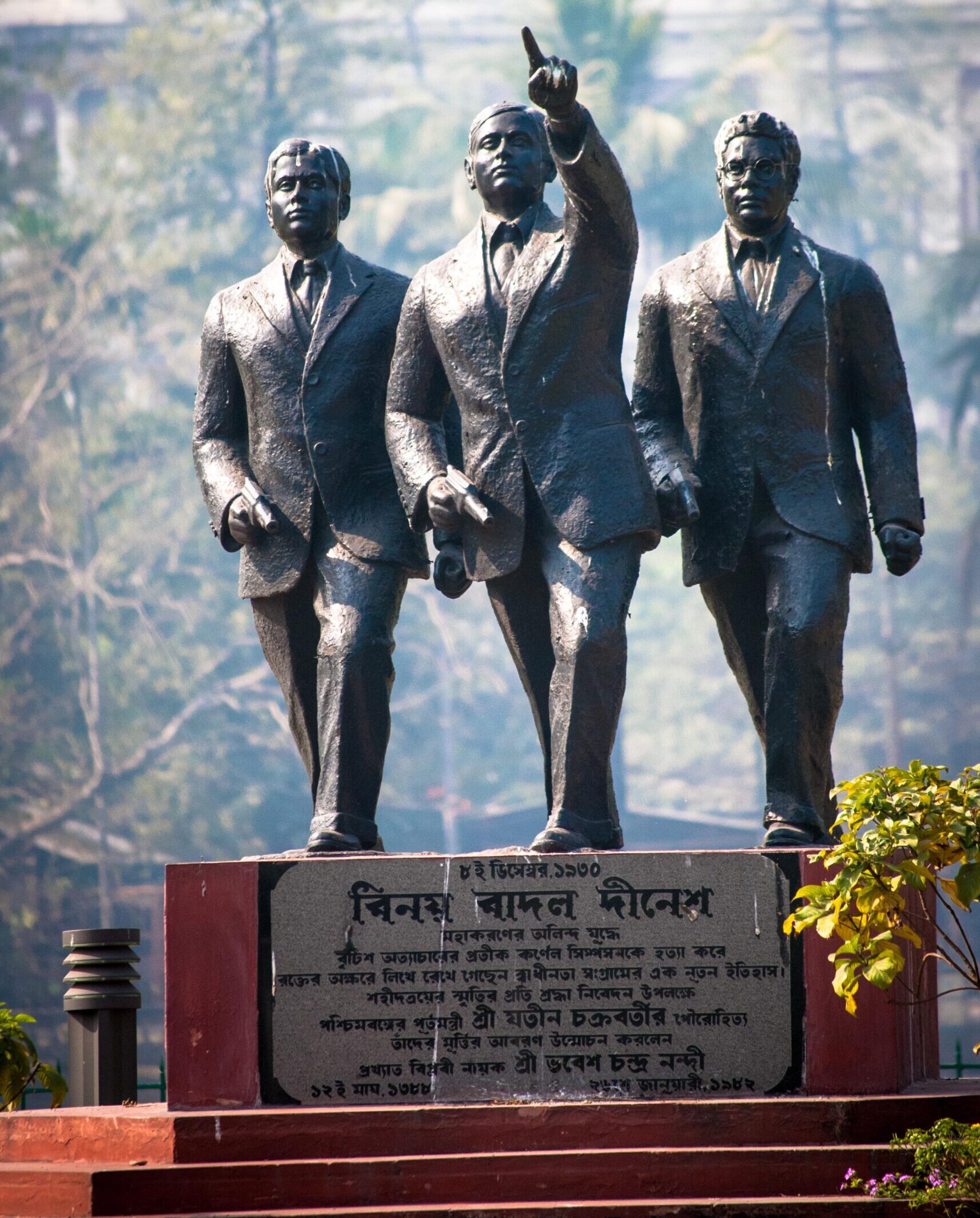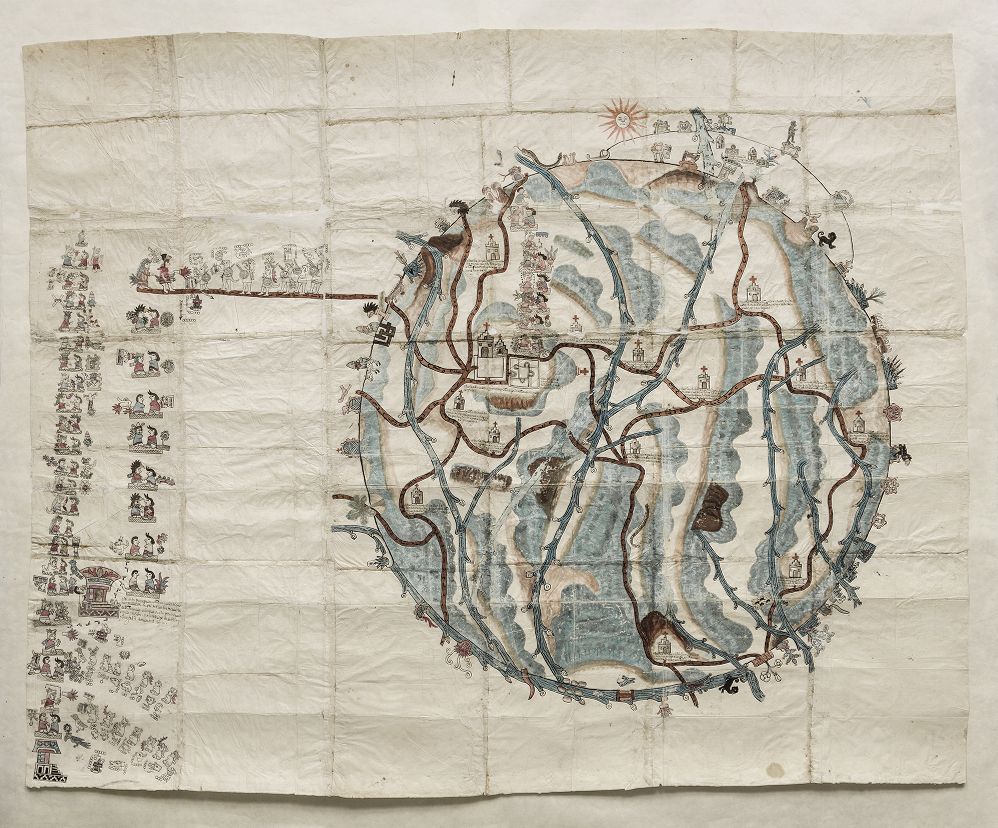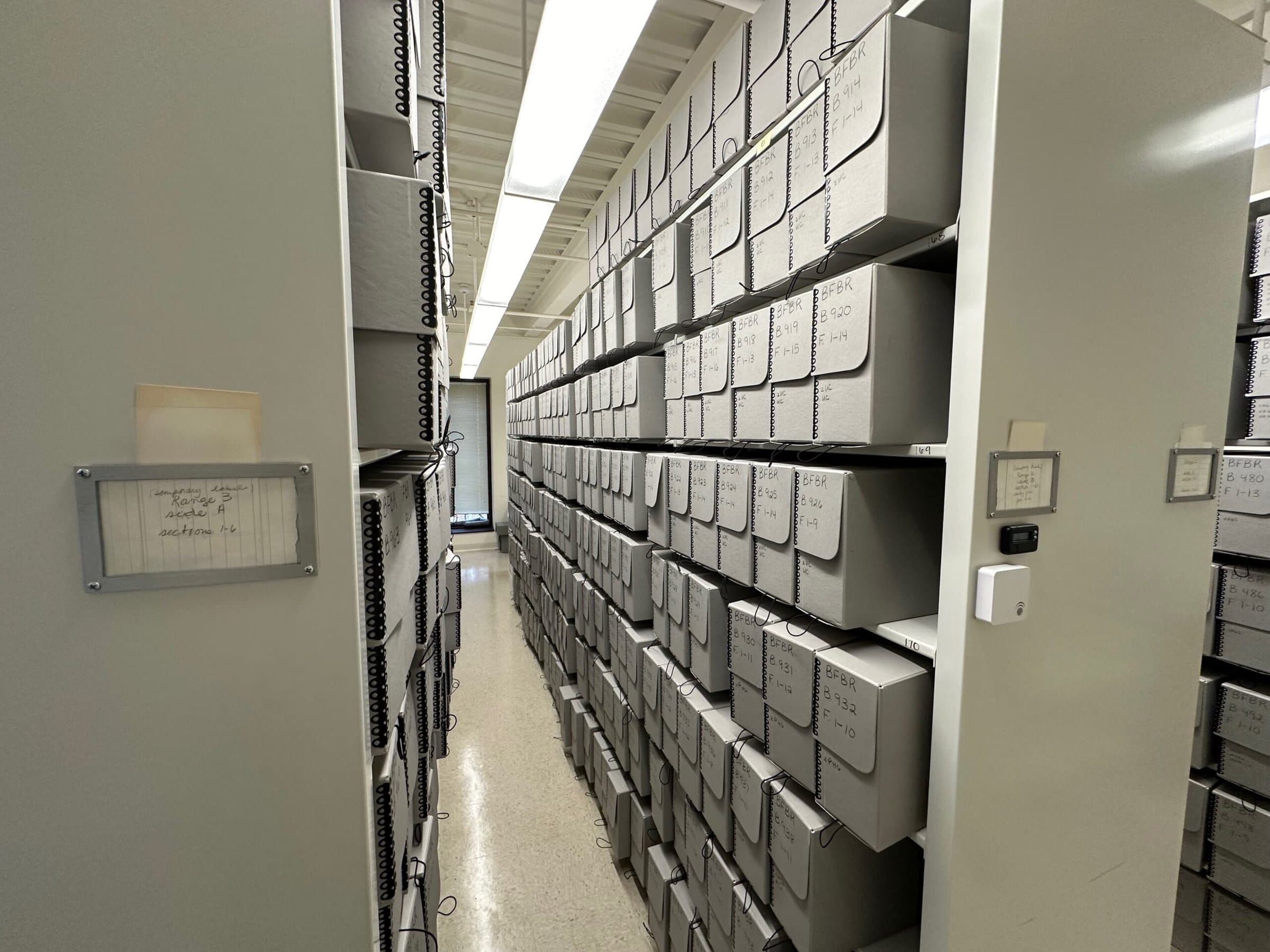The LaGuardia and Wagner Archives is located on the campus of LaGuardia Community College/City University of New York, in Long Island City, a section of New York City. It houses collections on the history of 20th-century New York, with a focus on the city’s mayoralty and the borough of Queens. Like other archives, the LaGuardia and Wagner Archives serves graduate students and scholars. But unlike other archives, it has also developed a variety of programs specially tailored for community college students.
While history students at four-year colleges are often asked at some point to use archives to prepare research papers, community college students are rarely given such assignments. Beginning in 1993, we initiated a series of steps designed to encourage use of the LaGuardia and Wagner Archives by LaGuardia Community College students. These steps included the display of historical exhibitions, the development of student materials, and changes to some of our operating procedures. We are pleased to report that our program, which we continue to develop, has been a success.
The Collections
The archives was created in 1982 when Marie La Guardia, the widow of Mayor Fiorello H. La Guardia, gave the mayor’s personal papers to the college. We subsequently obtained grants to microfilm La Guardia’s public papers. These acquisitions began the focus on the city’s mayoralty. In 1989 the archives acquired the personal papers of Robert F. Wagner, Jr., who was mayor of New York from 1954 to 1965. More recently, we have added collections on former mayors Abraham D. Beame and Edward I. Koch. These materials facilitate research on mayoral politics and policies across several administrations.
In 1984 the archives became the repository of the New York City Housing Authority. These materials complement the LaGuardia Collection, since the mayor presided over the establishment of public housing in New York in the 1930s. Indeed, a particular strength of the collection is the papers on those formative years of government-subsidized, low-cost housing. By now, the Housing Authority collection covers the period from the late 1920s to the 1990s and has become one of our largest and richest collections. It contains correspondence, reports, surveys, legislation, news clippings, testimony, and more than 25,000 photographs.
The archives’ focus on Queens, the city’s largest borough, is an outgrowth of the college’s location. Important components of the Queens collection include the papers of a pair of settlement houses and a 1,500-image photo collection, which ranges from the 1870s to the 1980s. The papers and photos help researchers to trace the remarkable transformation of Queens from a rural county at the turn of the century to an urban borough by mid-century. The papers of the piano company Steinway & Sons are another feature of the Queens collection. Steinway & Sons has been located in the borough’s northwestern corner since the 1870s. This collection consists of family, business, and workers’ records from 1853 to 1973. Labor historians find the Steinway workers’ records particularly useful.
Outreach Programs
The archives sponsors a variety of outreach programs designed to share the educational benefits and intrinsic interest of history with those who rarely visit archives, libraries, or museums. An annual community history calendar covers various topics growing out of the archives’ collections, such as the early history of public housing in New York, the public career of Robert F. Wagner, Jr., and workers at Steinway & Sons. Copies of the wall calendar are mailed to about 5,000 people across New York City. We also produce a fourth-grade curriculum on those topics, which is distributed to local elementary schools.
The Challenge
Our resources are strong and our outreach programs successful. Nonetheless, in 1993, when we began to evaluate circumstances for use of the archives by our students, we discovered several conditions that mitigated against their use by those enrolled in classes at LaGuardia. Perhaps the most salient was intimidation and fear of the unknown. Students at LaGuardia, like first-year and sophomore students generally, are somewhat familiar with libraries, having dealt with them in school or through public library systems, but most have had no association with archives when they arrive on campus. Similarly, first-year students at LaGuardia, and at most colleges, have little experience with historical research. They often lack the skills of analysis and note taking that are required to conduct historical inquiry. Moreover, history courses at LaGuardia are offered through the social science department—there is no history department. As a result, the customary constituency for use of a historical archives does not really exist. And since many of our students are not native speakers of English, there are also problems of language comprehension.
Finally, there is the problem of time. It takes a considerable amount of time to locate materials through the standard procedures of finding aids and computerized indexes at an archive. Graduate students and scholars are required to allot time for these activities. But students at LaGuardia are burdened by an array of obligations. These include heavy course loads, employment before and after classes, and, in many cases, parental responsibilities.
Despite these obstacles, we were encouraged by certain circumstances. The archives is administered by historians with doctoral degrees and teaching experience. Our training and interests directed the search for ways to facilitate learning through primary materials. In addition, the archives is part of the Division of Academic Affairs at the college, and our president, Raymond C. Bowen, and our provost, George Hamada, urged increased integration of our resources into the curriculum. Finally, our research space, while not as extensive as a library, can accommodate 10 to 12 people at a time.
The Solution
We began by creating a museum on the history of the city, which became the cornerstone of our educational program. The basis of the museum was a series of eight traveling exhibitions, which had been in storage for several years. They explored subjects such as the growth and development of Long Island City, the Steinway piano company, the history of leisure in Queens, and La Guardia’s association with aviation. Through fine cooperation with several college offices, particularly the maintenance department, we were able to refurbish the exhibitions at minimal cost. After materials in the displays were repaired or replaced, new frames and Plexiglas were added, and the panels were posted in the hallways near the archives.
The exhibition panels function as abbreviated history lessons within the context of broader themes. One panel, “Dashed Hopes on Queens Boulevard,” serves as an example. It shows how Queens Boulevard, the major thoroughfare of western Queens, was originally envisioned in 1910 as part of the City Beautiful movement, modeled after the wide streets of Europe that combined fine shops and pedestrian lanes. But the building of an elevated subway line on the boulevard and the absence of strict zoning regulations made the area very attractive to factory owners and proprietors of small stores, who quickly purchased the land and turned Queens Boulevard into a business street. This panel is part of an exhibition titled The Transformation of Queens: From Farmland to Factory.
The primary source materials reproduced in the panel—photographs and documents—were culled from the collections of the archives. They document the points of discussion in the panel’s text. In this way, that panel and others in our exhibitions are introductions to historical topics that can be explored through the collections of the archives, encouraging additional inquiry. To further improve the quality of the exhibitions as teaching tools, archives staff assembled study guides for the exhibitions consisting of short-answer, literal questions and longer, interpretive essay questions. The guides were distributed to college faculty, many of whom began to use them for assignments or take-home exams.
The exhibitions were also incorporated into an important innovation at the archives—orientation tours. These hour-long tours emerged as part of our response to the problem of students’ intimidation by archives. College classes, ranging in size from 15 to 35, visit the archives for the tours, which are designed to serve several purposes. First, they arrest fears of the unknown by explaining the function of an archive and introducing the concept of learning history from primary sources. Second, staff use exhibition materials to teach select aspects of the history of the city. Finally, the tours prepare students to return to the archives to conduct their own studies through what we call reserve research projects, which lead to written reports.
Reserve Research Projects
Students who work on the reserve research projects choose from a series of 30 topics that can be studied through our collections. These include subjects such as the Harlem riot of 1943, La Guardia and crime, Mayor Wagner and the reform campaign of 1961, discrimination in public housing, the effect of the Flushing elevated subway line on the growth of Queens, and women in the history of New York City. We have identified the materials—news clips, correspondence, reports and other documents, photographs, maps, and oral histories—needed to understand these topics. The list of topics is distributed to faculty at the college and to students interested in using our facilities.
At the archives, staff quickly retrieve the items students need to examine—documents related to La Guardia and crime, for instance. This approach eliminates the intimidating and time-consuming process of using finding aids and indexes to locate materials. As the system has developed, we have identified sources essential to student projects. We generally assume students can allocate four to eight hours of time for research, and we have prepared the resources accordingly. If interest and time permit, staff bring students additional materials.
While we realize that we simplify the procedures, the reserve research projects helped us to overcome some of the barriers that were preventing our students from using our collections. They enable us to fulfill the goal of having community college students learn and become interested in history through our resources. In that light, we accept the trade-off of eliminating the usual practices of locating materials through indexes and finding aids.
Increased Use
Many students enrolled in history courses at the college quickly began to use our materials. Yet this is a fairly small group. In order to increase use, we have reached across the disciplines seeking areas of the curriculum where our materials might be incorporated. We have been most successful with the college’s English composition course, which requires a brief research paper, and various urban studies courses in the social science department. Nearly a thousand LaGuardia students now use the collections each semester to research and write about history.
As our list of reserve projects has circulated throughout the college, some faculty ask students to visit the archives to research the subjects, without the benefit of an orientation tour. Understandably, instructors are reluctant to surrender class time for a tour. Yet this approach produces less favorable results. Undergraduate students require an introduction to the nature of a historical archive, and they must be taught to use primary sources to learn history. In discussions with faculty interested in the program, our staff members stress the primacy of the orientation. Even a tour of 30 minutes can significantly enhance the learning process when students return to research.
In a further development of the program conducted in association with a humanities professor at the college, John Chaffee, members of our staff now visit classes and give presentations on the historical background of subjects. They also use copies of primary source materials to teach procedures for research and note taking. Those classes then follow the normal schedule—orientation tours followed by group visits to the archives to work with the reserve research materials.
Expansion of our program, which is a goal of the archives, will require additional staff and space. We continue to examine our collections to assemble additional reserve research projects, and we continue to revise existing projects, adding and deleting material based on student interest and response.
Conclusion
Certain factors have facilitated the success of the program. Among these are encouragement from college officials and the existence of support services, both of which helped us to establish our museum in the corridors of the school at a very low cost. Beyond these factors, our training as historians motivated us to seek ways to increase learning about the past from our materials. We operated from a basic assumption that the challenges and rewards of studying history from primary sources could be made available to undergraduates. In that context, we modified standard archival management procedures that impeded use of the collections and adopted some of the concepts of reserve reading assignments at a library. These procedures generated a dramatic increase in use of our resources. Much work remains to be done, of course, but we have made a good start in developing ways to make a historical archives useful for teaching history to undergraduate students.
Richard K. Lieberman, who received his Ph.D. in history from New York University, is director of the LaGuardia and Wagner Archives. He is the author of Steinway & Sons. David Osborn, assistant director of the LaGuardia and Wagner Archives, received his Ph.D. in history from the Graduate Center of the City University of New York. He writes and publishes on the Civil War period.


